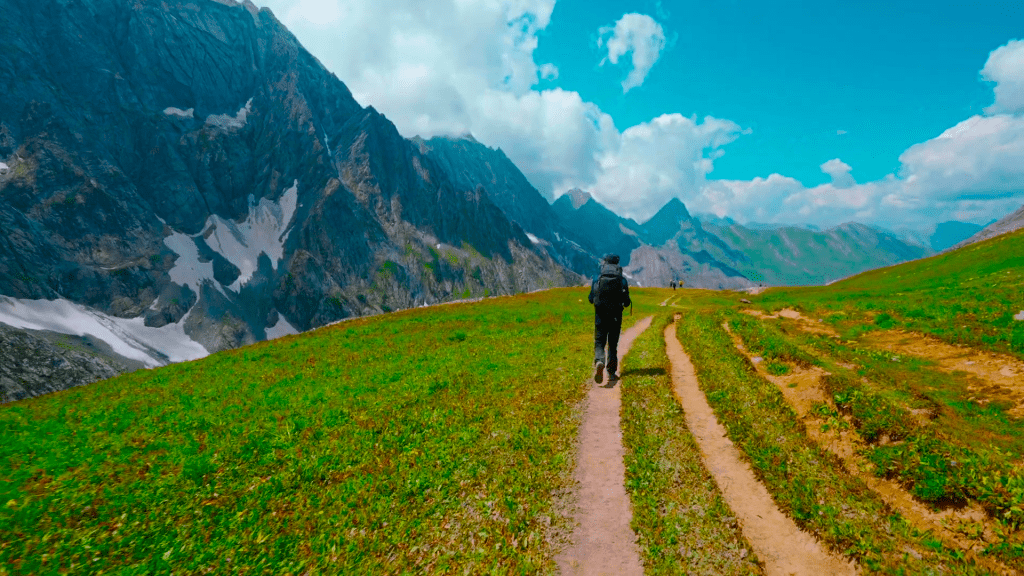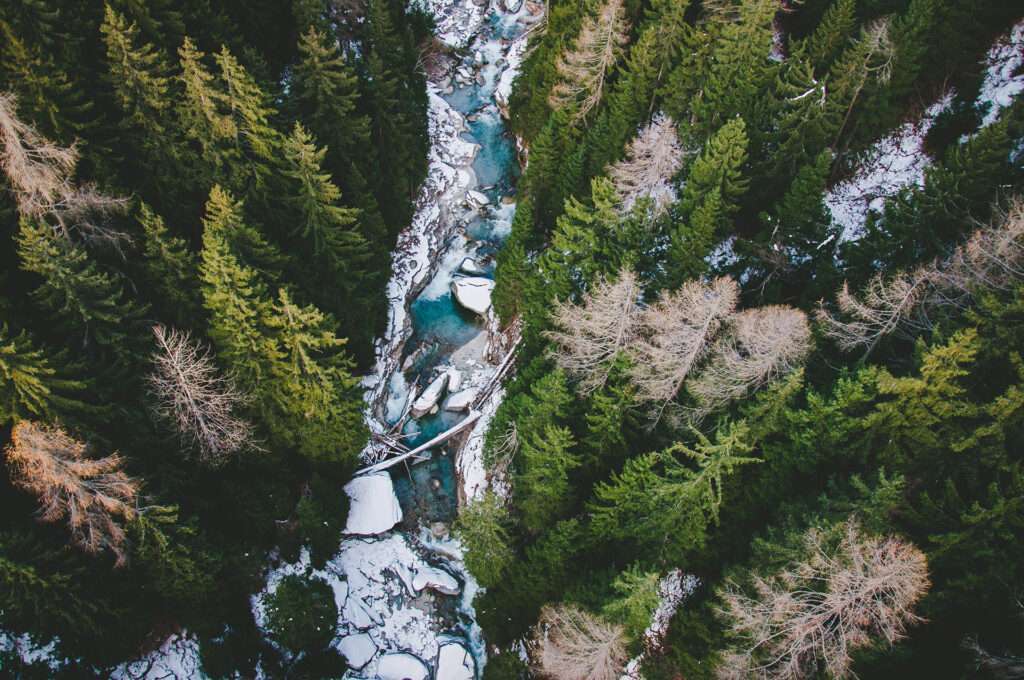Kashmir Great Lakes Trek
Embark on the Ultimate Adventure: Kashmir’s Great Lakes Trek Awaits
Experience the breathtaking beauty of Kashmir’s Great Lakes Trek, a journey through the pristine Himalayan landscapes. This incredible trek takes you through lush meadows, crystal-clear alpine lakes, and majestic mountains, offering an unforgettable adventure for nature lovers and trekkers. Discover the untouched wilderness, enjoy the fresh mountain air, and witness the stunning scenery that makes Kashmir a top travel destination. Perfect for those seeking adventure, tranquility, and awe-inspiring views, this trek promises unforgettable memories and unparalleled natural beauty.
Highlights of the Kashmir Great Lakes Trek:
- Pristine Alpine Lakes: Encounter the stunning Vishansar, Krishansar, Gadsar, Satsar, and Gangbal lakes, each with its unique charm and crystal-clear waters reflecting the surrounding mountains.
- Lush Meadows and Wildflowers: Trek through vibrant meadows carpeted with colorful wildflowers, providing a picturesque setting for your journey.
- Majestic Himalayan Peaks: Enjoy panoramic views of the majestic Himalayan ranges, including the towering Harmukh peak, as you traverse high-altitude passes and scenic ridgelines.
- Serene Campsites: Camp by the tranquil lakes and in serene meadows, experiencing the tranquility and beauty of Kashmir’s wilderness under the starlit sky.
- Rich Biodiversity: Spot diverse wildlife, including Himalayan marmots, golden eagles, and various bird species, adding to the trek’s enchanting experience.
Trek Details:
- Duration: 8 days
- Difficulty Level: Moderate to Challenging
- Best Time to Visit: June to September
- Starting Point: Sonamarg
- Ending Point: Naranag
The most affordable price
Scroll Down For Detailed Itinerary:
Detailed Itinerary:
Day 1: Arrive in Srinagar, Transfer to Sonamarg
- Arrival Time: Morning
- Travel Distance: 80 km by road
- Travel Time: 3 hours Arrive at Srinagar and enjoy a scenic drive to Sonamarg, known as the ‘Meadow of Gold.’ Surrounded by snowy mountains and lush valleys, Sonamarg is the perfect starting point for your adventure. Spend the night in a comfortable camp or hotel, preparing for the trek ahead. In the evening, you can take a leisurely walk around Sonamarg, enjoying the beautiful views and acclimatizing to the altitude.
Day 2: Sonamarg to Nichnai
- Starting Time: 8:00 AM
- Trek Distance: 11 km
- Trek Time: 6-7 hours Start your trek from Sonamarg, walking through dense forests of pine and maple. Cross the roaring Sindh River via a wooden bridge and gradually ascend to the lush meadows of Nichnai. The trail offers stunning views of the surrounding peaks and valleys. As you trek, you may encounter shepherds tending to their flocks. Camp overnight in the serene Nichnai Valley, under a sky full of stars, and enjoy a warm meal prepared by your trekking team.
Day 3: Nichnai to Vishansar Lake
- Starting Time: 7:00 AM
- Trek Distance: 12 km
- Trek Time: 6-7 hours Trek through the beautiful Nichnai Pass, also known as the Vishansar Berry. The climb to the pass is challenging but rewarding, offering breathtaking views of the Himalayan ranges. Descend to the alpine meadows and pristine Vishansar Lake, where you will camp beside the shimmering blue waters. Spend the evening exploring the lake’s surroundings, capturing the stunning reflections of the mountains on the lake’s surface, and enjoying the tranquility of this remote location.
Day 4: Vishansar to Gadsar via Krishansar Lake and Gadsar Pass
- Starting Time: 7:00 AM
- Trek Distance: 14 km
- Trek Time: 8-9 hours Begin your day with a visit to the nearby Krishansar Lake, a twin to Vishansar. Continue your trek to the challenging Gadsar Pass, the highest point of the trek at 13,800 feet. The pass offers panoramic views of the surrounding valleys and peaks. Descend to the enchanting Gadsar Lake, known for its crystal-clear waters and abundant trout fish. Along the way, you might spot colorful Himalayan flowers and diverse bird species. Camp by the lake for the night, and enjoy a peaceful evening in the lap of nature.
Day 5: Gadsar to Satsar
- Starting Time: 8:00 AM
- Trek Distance: 12 km
- Trek Time: 6-7 hours Today’s trek takes you through a series of picturesque meadows and streams, with the trail gradually ascending towards Satsar Lakes. The Satsar region comprises seven small alpine lakes, each more beautiful than the last. Set up camp near one of the lakes and enjoy the tranquility and beauty of the area. Spend the evening exploring the lakes, fishing, or simply relaxing by the water, soaking in the serene environment and the star-studded sky.
Day 6: Satsar to Gangbal Twin Lakes via Zaj Pass
- Starting Time: 7:00 AM
- Trek Distance: 11 km
- Trek Time: 6-7 hours Trek through rocky terrains and lush meadows to reach the Zaj Pass, offering breathtaking views of the Harmukh peak and the twin lakes of Gangbal and Nundkol. Descend to the Gangbal Valley and set up camp beside the pristine Gangbal Lake, surrounded by towering peaks and green pastures. Spend the afternoon exploring the twin lakes, taking a refreshing dip in the clear waters, or interacting with local shepherds who graze their flocks in this picturesque valley.
Day 7: Rest Day at Gangbal, Explore Surroundings
- Activity Time: Full day Take a well-deserved rest day at Gangbal Lake. Explore the surrounding area, visit the nearby Nundkol Lake, or simply relax by the lakeside, soaking in the stunning views and peaceful ambiance. This day offers a perfect opportunity to recharge and reflect on your trekking journey. You can also take short hikes around the lake, try your hand at fishing, or enjoy a picnic by the water’s edge.
Day 8: Gangbal to Naranag, Drive to Srinagar
- Starting Time: 8:00 AM
- Trek Distance: 15 km
- Trek Time: 6-7 hours On the final day, trek down from Gangbal to Naranag, passing through lush forests and charming villages. The descent is gradual and offers beautiful views of the countryside. Upon reaching Naranag, visit the ancient Naranag Temple, an important archaeological and historical site. Enjoy a comfortable drive back to Srinagar, where your unforgettable adventure comes to an end. Celebrate your trek with a farewell dinner and share stories with fellow trekkers.
Why Choose Us for Your Trekking Adventure:
- Experienced Guides: Our knowledgeable and friendly guides ensure a safe and enjoyable trekking experience.
- All-Inclusive Packages: From permits and camping gear to delicious meals and comfortable transport, we’ve got you covered.
- Sustainable Tourism: We prioritize eco-friendly practices to preserve the natural beauty of Kashmir.
Join us on the Kashmir Great Lakes Trek and create memories that will last a lifetime. Book your adventure today and discover the unparalleled splendor of Kashmir’s great outdoors.
Frequently Asked Questions (FAQs)
Q: What is the best time to visit Tarsar and Marsar Lakes? A: The best time to visit Tarsar and Marsar Lakes is from June to September. During these months, the weather is pleasant, the trails are clear, and the meadows are in full bloom, making it an ideal time for trekking.
Q: How difficult is the Tarsar Marsar trek? A: The Tarsar Marsar trek is considered moderate to difficult. It involves several steep ascents and descents, and trekkers need to be physically fit and prepared for high-altitude conditions.
Q: What kind of accommodation is available during the trek? A: Accommodation during the trek includes camping in tents at designated campsites such as Lidderwat, Shekwas, and Sundarsar. Trekkers need to carry their own camping gear or opt for organized treks that provide tents and other essentials.
Q: Are there any permits required for the trek? A: Yes, trekkers need to obtain permits from the Jammu and Kashmir Tourism Department. These permits are generally arranged by trekking agencies if you book through them.
Q: What should I pack for the Tarsar Marsar trek? A: Essential items include a good quality trekking backpack, sturdy trekking shoes, warm clothing, rain gear, sleeping bag, first-aid kit, water bottle, energy snacks, and personal toiletries. It’s also advisable to carry trekking poles and a camera.
Q: Is it safe to trek to Tarsar and Marsar Lakes? A: Yes, the trek is generally safe for tourists. However, it is recommended to trek with a guide or in a group, especially if you are not familiar with the terrain. Always check the local weather conditions and follow safety guidelines.
Q: Can beginners undertake the Tarsar Marsar trek? A: While the trek is not extremely technical, it does require a good level of fitness and some prior trekking experience. Beginners should prepare adequately and consider joining a guided trek to ensure safety and support.
Q: What is the altitude sickness risk on this trek? A: The trek reaches a maximum altitude of 13,000 feet at Marsar Lake. Trekkers may experience mild altitude sickness. It is important to acclimatize properly, stay hydrated, and ascend gradually to minimize risks.
Q: What kind of food is available during the trek? A: During the trek, food is typically simple and nutritious, consisting of items like rice, lentils, vegetables, chapatis, and tea. If you are on an organized trek, meals will be provided. Otherwise, you should carry your own provisions and cooking equipment.
Q: How can I prepare physically for the Tarsar Marsar trek? A: Physical preparation should include cardiovascular exercises such as running, cycling, and swimming to build endurance. Strength training for your legs, core, and upper body is also important. Additionally, practice hiking with a loaded backpack to simulate trekking conditions.
Q: Is it necessary to hire a guide for the Tarsar Marsar trek? A: While not mandatory, hiring a guide is highly recommended, especially for those unfamiliar with the terrain. Guides provide valuable knowledge about the trail, ensure safety, help with navigation, and enrich the trekking experience with local insights.
Q: What are the weather conditions like during the trek? A: The weather in the Kashmir Valley can be unpredictable. During the trekking season from June to September, days are generally pleasant with temperatures ranging from 15°C to 20°C, while nights can be cold, dropping to 0°C or lower. Rain and snow can occur, so it’s important to be prepared for varying conditions.
Additional Information:
- Weather: Be prepared for sudden weather changes. Pack warm clothes, even during the summer months.
- Connectivity: Mobile network coverage is limited along the trek. Inform your family and friends about the lack of connectivity.
- Eco-friendly Trekking: Carry all your waste back and avoid littering. Respect the local culture and natural environment.
- Hydration: Carry enough water and use purification tablets or a portable filter for drinking from natural sources.
- Wildlife and Flora: Keep an eye out for Himalayan wildlife. The region is also rich in diverse flora, including rare Himalayan flowers.
- Local Culture: Interact with local shepherds and villagers along the trekking route, gaining insights into their traditional way of life and culture.
- Emergency Contact: Carry emergency contact numbers of local authorities and your trekking agency for any unforeseen situations.






